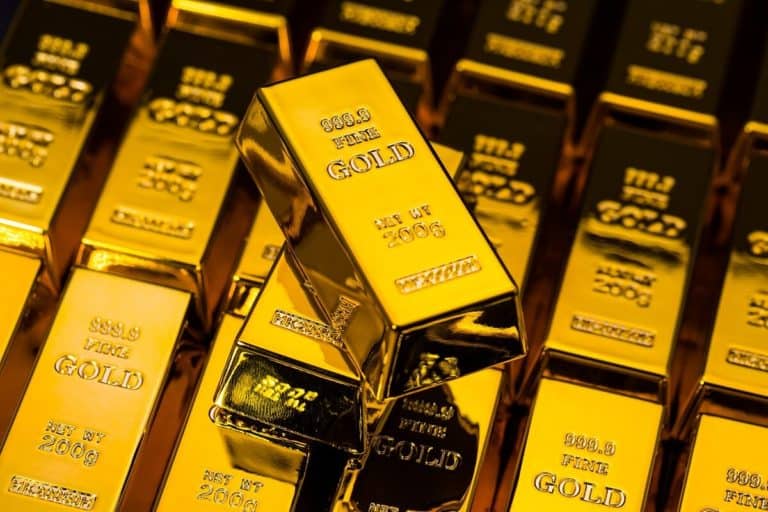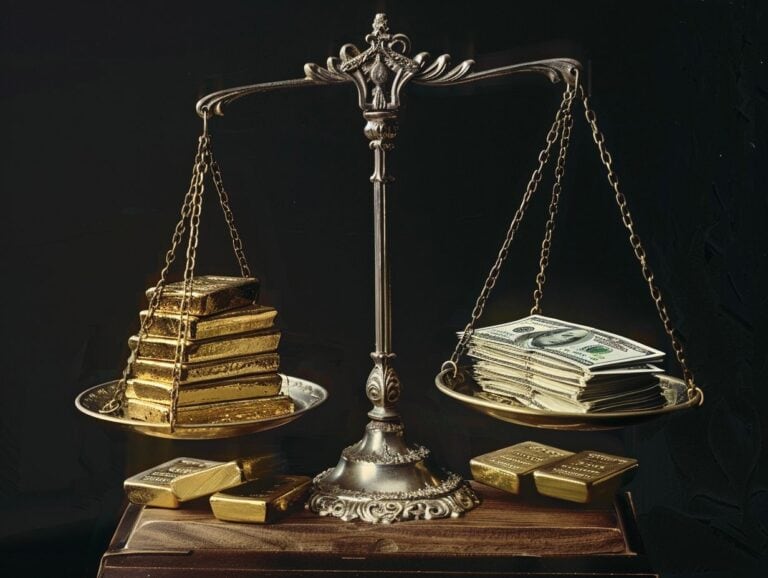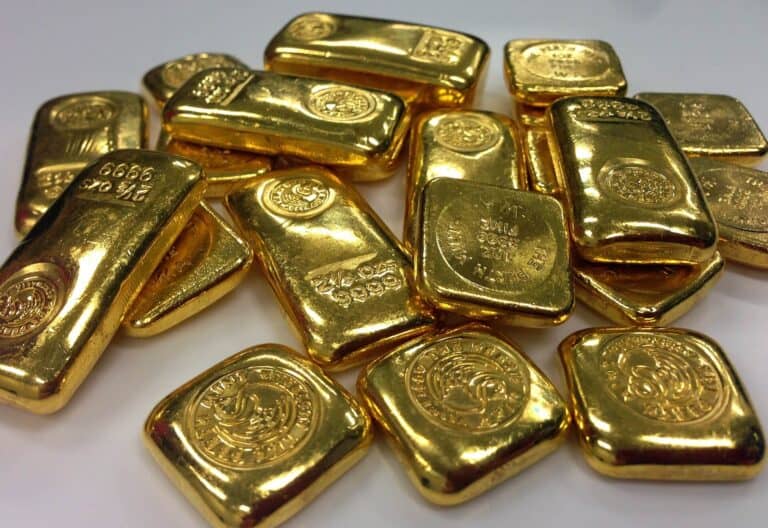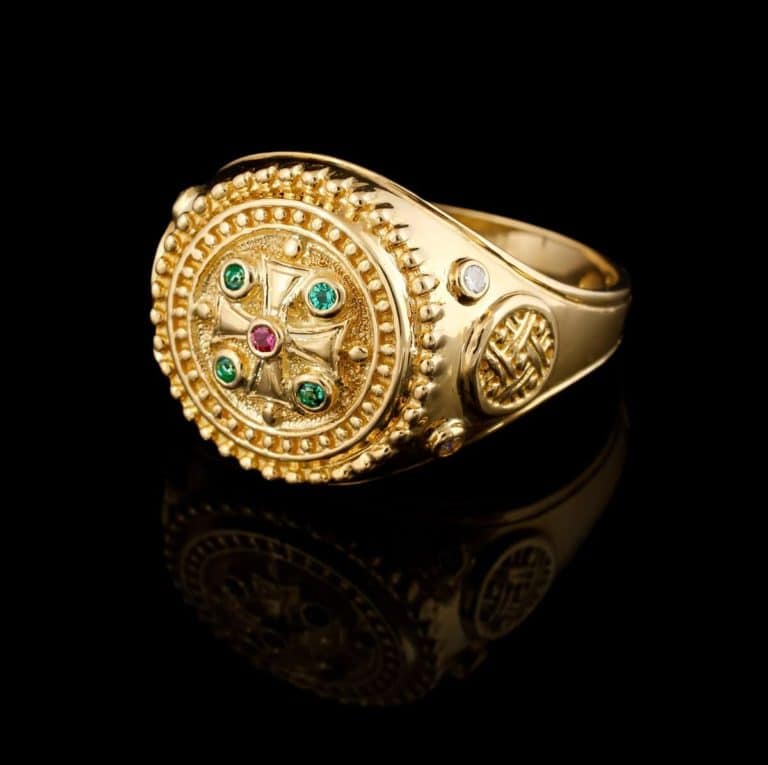Trading gold and silver futures offers investors, including speculators and hedgers, a dynamic opportunity to speculate on price movements and hedge against market volatility. These financial contracts, traded on futures exchanges like COMEX and NYSE Liffe, allow investors to buy or sell specific amounts of precious metals at predetermined prices on future dates, giving them flexibility and potential capital gains.
Key advantages of trading gold and silver futures include:
- Portfolio diversification
- Leverage for controlling larger positions with less capital
- High liquidity for quick entry and exit strategies
These futures contracts also serve as a hedge against inflation, maintaining value during economic uncertainty. They appeal to both hedgers and speculators looking to protect their investment portfolios.
However, trading these futures carries risks like price volatility and potential losses, especially with margin trading and financial leverage. Effective risk management and a comprehensive understanding of market factors, performance margin requirements, and investment strategies are essential for mitigating these risks and enhancing trading outcomes.
To embark on trading gold and silver futures, investors must understand the investment platforms and trading conditions, and:
- Select reliable platforms
- Understand contract specifications
- Develop strategic approaches tailored to their risk tolerance and investment goals
By mastering these elements, traders can capitalize on opportunities in the precious metals market, leveraging their contracts for potential returns.

Key Takeaways:
- Trading gold and silver futures can provide investors with opportunities for diversification and potential profits.
- However, it is important to understand and manage the risks involved, as market volatility, contract expiration, and economic and geopolitical factors can impact prices.
- To start trading futures, one must meet certain requirements such as exchange margin and performance margin, and develop a solid risk management plan, while also considering different strategies such as buy and hold or day trading.
What Are Gold and Silver Futures?
Gold and silver futures are financial contracts allowing investors to buy or sell a specific amount of gold or silver at a predetermined price on a future date.
These futures contracts are traded on centralized exchanges such as COMEX and NYSE Liffe.
Gold and silver futures enable investors to manage price risk, leverage capital, and engage in hedging transactions.
Why Trade Gold and Silver Futures?
Trading gold and silver futures allows investors to speculate on price movements and hedge against market volatility.
Gold and silver futures provide financial leverage, enabling investors to control larger positions with less capital, thus enhancing potential return profiles.
Futures trading offers diversification and potential profit opportunities through strategic price speculation and varied investment strategies.
What Are the Advantages of Trading Gold and Silver Futures?
Advantages of trading gold and silver futures include portfolio diversification, risk management against price volatility, flexibility in managing open positions, and potential profit amplification through leverage.
Gold and silver futures offer high liquidity, allowing traders to quickly enter and exit positions.
These futures serve as a hedge against inflation, maintaining value during economic uncertainty.
What Are the Risks of Trading Gold and Silver Futures?
Trading gold and silver futures carries risks, including price volatility and potential for significant losses.
Price fluctuations can lead to losses, especially with margin trading, where leveraged positions and exchange margin requirements amplify risk.
Market volatility may cause margin calls, requiring funds to maintain positions.
Effective risk management and understanding margin requirements help mitigate these risks.
How to Start Trading Gold and Silver Futures?
To start trading gold and silver futures, begin by selecting a reputable trading platform that offers futures contracts for these metals.
Open a brokerage account specifically for futures trading and deposit the required margin.
- Understand contract specifications including contract size, expiration, tick value, and delivery conditions on exchanges such as COMEX.
- Gain knowledge in futures market fundamentals, investment strategies, and the role of physical delivery and bank vaults to effectively trade gold and silver futures.
What Are the Requirements for Trading Gold and Silver Futures?
To trade gold and silver futures, investors need a margin account with a brokerage that offers futures trading.
Requirements include meeting margin requirements, understanding contract specifications and delivery conditions, and selecting a trustworthy trading platform.
Futures trading involves leverage, which can amplify potential gains and losses.
What Are the Steps to Start Trading Gold and Silver Futures?
To start trading gold and silver futures, follow these steps:
- Select a reliable trading platform that offers futures contracts for gold and silver, such as options or ETFs.
- Set up a trading account with the chosen platform.
- Research market trends and contract specifications for gold and silver futures.
- Determine your capital allocation for trading.
- Develop a trading strategy based on your risk tolerance and investment goals.
- Use demo accounts to practice trading without financial risk.
- Regularly review and adapt your strategy based on market performance and ongoing research.
What Are the Factors That Affect Gold and Silver Futures Prices?
Gold and silver futures prices are affected by factors like inflation rates, interest rates, and currency fluctuations.
Geopolitical events also influence futures prices by creating market uncertainty and volatility.
These economic and political factors impact demand and investor strategies in the precious metals market.
What Are the Economic Factors?
Economic factors are variables that influence a country’s economic performance, including inflation, interest rates, and GDP growth.
Economic factors impact futures prices of commodities like gold and silver.
Inflation increases demand for precious metals as a hedge, while interest rates affect investment behavior.
GDP growth influences market sentiment toward safe-haven assets.
What Are the Geopolitical Factors?
Geopolitical factors are events and conditions related to international politics and relations that impact global markets.
Examples include conflicts, trade disputes, and political instability.
These factors can influence the demand for safe-haven assets like gold and silver and affect their prices.
What Are the Different Strategies for Trading Gold and Silver Futures?
Strategies for trading gold and silver futures include long-term buy-and-hold, day trading, swing trading, and scalping.
Long-term buy-and-hold involves holding positions over extended periods, while day trading focuses on short-term price movements within a single day.
Swing trading captures price swings over several days, and scalping seeks quick profits from small price changes.
What Is the Buy and Hold Strategy?
The buy and hold strategy in gold and silver futures involves purchasing contracts and holding them for an extended period to benefit from long-term price appreciation.
This strategy is based on the belief in the inherent value of precious metals and anticipating upward trends over time.
By holding the contracts, investors aim to ride out market volatility and capitalize on potential capital gains.
What Is the Day Trading Strategy?
Day trading strategy involves buying and selling financial instruments within the same trading day to capitalize on short-term market movements.
Day trading strategy requires quick decision-making based on technical analysis and real-time data to avoid overnight risks.
Effective day trading focuses on identifying trends and executing trades swiftly.
What Is the Swing Trading Strategy?
Swing trading is a strategy that involves holding positions in financial assets like stocks, commodities, or futures for several days to weeks to capture short- to medium-term price movements.
Swing trading works by identifying and capitalizing on market trends and reversals using technical indicators such as moving averages and Relative Strength Index (RSI) while monitoring market expectations.
Swing traders set stop-loss orders to manage risk and establish profit targets to lock in gains before market reversals.
What Is the Scalping Strategy?
Scalping is a high-frequency trading strategy in gold and silver futures that focuses on making quick trades to profit from small price changes.
Scalping works by executing rapid trades within minutes or seconds, requiring traders to swiftly react to market fluctuations and news.
Scalpers prefer high liquidity futures contracts to minimize market risk and secure small profits through frequent trading.
How to Manage Risks When Trading Gold and Silver Futures?
To manage risks when trading gold and silver futures, traders should set margin requirements, use stop-loss orders, and diversify their portfolios.
Risk management involves understanding market volatility, setting stop-loss orders to limit losses, adjusting margin levels based on market conditions, and considering performance margin adjustments.
Traders diversify holdings to spread risk across different assets.
What Is Risk Management?
Risk management is the process of identifying, assessing, and mitigating potential losses in investment activities.
Risk management involves setting risk tolerance levels, using hedging techniques, and making informed decisions to safeguard against adverse market movements.
Risk management strategies include:
- Stop-loss orders
- Diversification
- Ongoing market condition monitoring
Effective risk management reduces financial loss and improves long-term performance.
What Are the Common Risk Management Techniques?
Common risk management techniques include:
- Stop-loss orders
- Diversification
- Market analysis
Stop-loss orders automatically close positions at a predetermined price to limit losses.
Diversification spreads investments across various assets to reduce the risk of market exposure.
Market analysis involves assessing market conditions for knowledge-based decision making in trading.
How to Create a Risk Management Plan for Trading Gold and Silver Futures?
To create a risk management plan for trading gold and silver futures, such as those available on COMEX and NYSE Liffe, investors need to define risk tolerance, specify the use of performance margins, and set parameters for stop-loss orders and profit targets. It is also advisable to contact a Futures Brokerage firm, such as SWAF-18, for guidance.
The process involves assessing market volatility, economic indicators, and personal financial goals to tailor the strategy to individual trading styles.
Steps include:
- Conducting a risk assessment
- Determining position size
- Regularly reviewing and adjusting performance metrics
This plan helps mitigate risks and enhances trading confidence.
Frequently Asked Questions
What are Gold and Silver Futures?
Gold and Silver Futures are contracts that allow investors to buy or sell a specified amount of gold or silver at a predetermined price and date in the future. These contracts, often traded on platforms like COMEX and NYSE Liffe, are a popular way for investors to speculate on the future prices of gold and silver.
How does trading Gold and Silver Futures work?
Trading Gold and Silver Futures involves buying or selling contracts for a specified amount of gold or silver at a predetermined price and date in the future. These contracts are traded on Futures Exchanges and can be bought or sold at any time before their expiration date. Once the contract expires, the buyer is obligated to either take physical delivery of the gold or silver or settle the contract for cash.
What are the benefits of trading Gold and Silver Futures?
Trading Gold and Silver Futures offers investors several benefits, including leverage, liquidity, and the ability to hedge against market volatility. Leverage allows investors to control a larger amount of gold or silver with a smaller amount of capital, while liquidity ensures that these contracts can be bought or sold easily. Additionally, trading futures allows investors to hedge against potential losses in the physical market by locking in a price for future delivery. Investors can also trade spot gold as an alternative method to manage risks associated with gold investments.
What are the risks of trading Gold and Silver Futures?
As with any investment, there are risks associated with trading Gold and Silver Futures. These include market volatility, leverage risk, and the risk of not being able to take physical delivery of the gold or silver if the contract expires. It is important for investors to understand these risks and have a solid risk management strategy in place before trading futures.
How can I start trading Gold and Silver Futures?
To start trading Gold and Silver Futures, you will need to open an account with a Futures Brokerage firm, like SWAF-18, and deposit the required margin. For assistance, you can contact a professional at 800-433-9196. You will also need to do your own research and analysis on the market and be familiar with the trading platform and tools offered by your chosen brokerage. It is recommended to start with a small amount and gradually increase your position as you gain more experience and knowledge in trading futures.
Are there any alternative ways to invest in gold and silver?
Yes, there are alternative ways to invest in gold and silver, including purchasing physical bullion or investing in exchange-traded funds (ETFs) that track the price of gold and silver. Jewelers often prefer physical gold for crafting, while individual investors might find ETFs more convenient for portfolio diversification. Each type of investment has its own unique benefits and risks, so it is important to research and understand them before deciding which one is the best fit for your investment goals and risk tolerance.
Authors & Disclosures
- Our content is independently written and reviewed by trusted reviewers & fact-checkers.
- We can earn money by connecting you with top Gold IRA Companies. Learn how our reviews work.
- Want to learn more? Meet our authors and explore our editorial policy.















